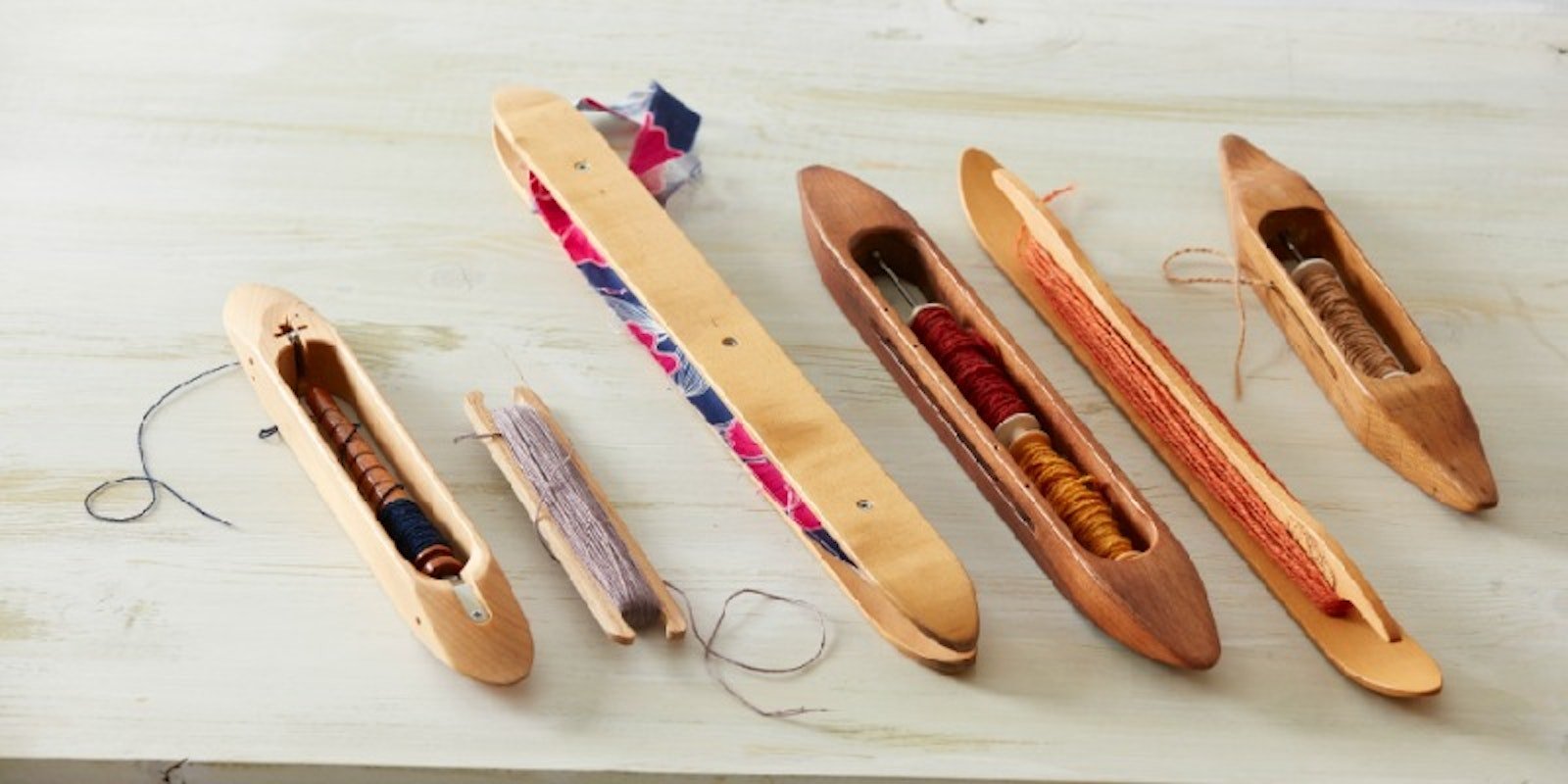I have a friend who teaches art at a local elementary school. It’s a smaller school that encourages art and exploration as you are learning to weave, so it should come as little surprise that some kind soul gifted her with a full-sized loom. She posted a photo on social media asking if anyone could help her with her new loom. Tell her if it works and how to use it, and maybe do some demonstrations. I immediately chimed in because how could I not!
She was given a wide 4-shaft loom with six treadles that looked in the photos like it was in excellent shape. I plan to give it an in-person evaluation, but I have also been thinking about what resources to recommend to help her out. She’s got a full-time job and an adorable son, so taking a traditional weaving class is out of the question at the moment. Fortunately, we live in marvelous times, with plenty of resources to help busy people learn to weave. Because she’s a teacher, I figured videos work the best for her circumstances. This way, she can watch when she has time, and it’s easy to cue up parts of the video to review specific techniques.
 Learning to weave doesn’t have to be difficult or stressful as long as you have the right teachers!
Learning to weave doesn’t have to be difficult or stressful as long as you have the right teachers!
Here’s what I came up with to help my friend. If you want to learn how to weave on a multi-shaft loom or help somebody else who wants to learn to weave, here are my top video resources for learning how to weave on a multi-shaft loom.
Beginning Weaving with Tom Knisely. This video covers project planning, warping, weaving, and finishing—everything you’d want to learn to weave your first project! Plus, it’s all taught by Tom Knisely, who is an excellent teacher and the sort of person who radiates so much warmth you could probably use him to heat your home. Who better to teach a new weaver? You can easily watch and rewatch just the parts of the video that you need, whenever you need them.
ADVERTISEMENTWarping Your Loom with Madelyn van der Hoogt. This video is fantastic. It shows you each step of warping and all the equipment you need. And of course, it’s Madelyn, so she has all sorts of tips and tricks to make warping even easier and more efficient. For example, her tabletop sleying technique is a total game changer!
Totally Twill: The Basics with Robyn Spady. Twill is often the first structure weavers try after plain weave. It’s such a good beginner weave structure because it doesn’t require long repeats, you can have fun playing with treadling, and it produces beautiful patterns. This video explains how twill works, how to design using twill, and provides a wealth of other valuable information about this wonderful weave structure.
Weaving with Rags, also with Tom Knisely. Tom is a master weaver, but he is especially a genius at weaving rugs and with rags. If you’re interested in weaving rag rugs and other upcycled cloth and fabric items (or you need more Tom Knisely in your life because who doesn’t), then this video is a must-have.
Wet-Finishing for Weavers with Laura Fry. Those of us in the profession of teaching weaving love to say, “It’s not finished until it’s finished” because weavers can’t resist the temptation for a good(?) pun. Of course, it’s also very accurate. Your cloth might be off the loom, but until you’ve wet-finished it and stabilized the weft, it’s not done yet. Laura’s video teaches you how to do these final steps of weaving for all the major fibers. Laura also has a scientific mind, and her techniques were developed over years of research—she did, after all, literally write the book on the subject.
BONUS: The Loom Owner’s Companion with Tom Knisely (again). This is a bit of a bonus video. It’s not one you need to learn how to weave, but if you’re a loom owner, it’s a must-watch. The video teaches the differences between different looms, how to interpret weaving drafts for sinking sheds vs rising sheds, and all the different ways to keep your loom happy and healthy.
There you have it! With these videos, you’ll learn everything you need to know to get started weaving, from getting your loom warped to twisting the fringe on your beautiful, finished project.
Happy Weaving!
Christina
Published December 27, 2017; updated August 1, 2025

